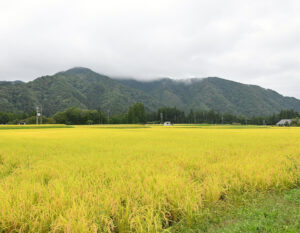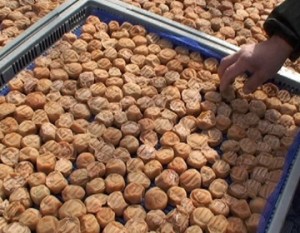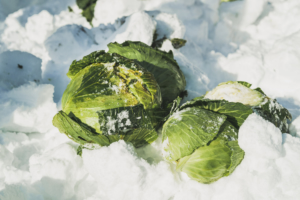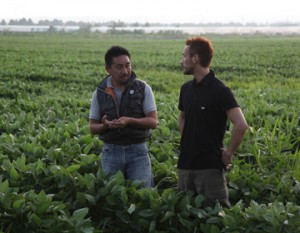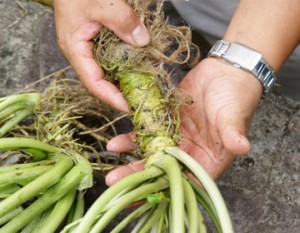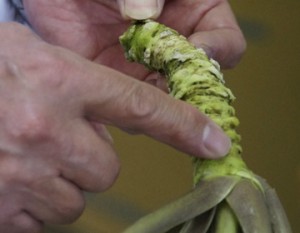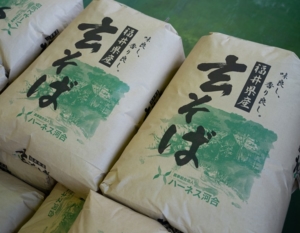This rare Zaida rice is grown in the land nurtured by the mountains, the sea, and the beautiful nature known as “Toyako Blue. This brand of rice won the Grand Prix at the “Rice-1” competition held by the town of Rankoshi in Hokkaido to determine the best taste of rice in Japan, and was also awarded the title of best rice in Japan. The rice is a popular product with its chewy and sweet taste. We visited Mr. Tetsuzo Sasaki, the 5th generation owner of “Miyauchi Noen,” the producer of Zaida Rice.
Rice grown in a mild climate, clear water, and rich soil
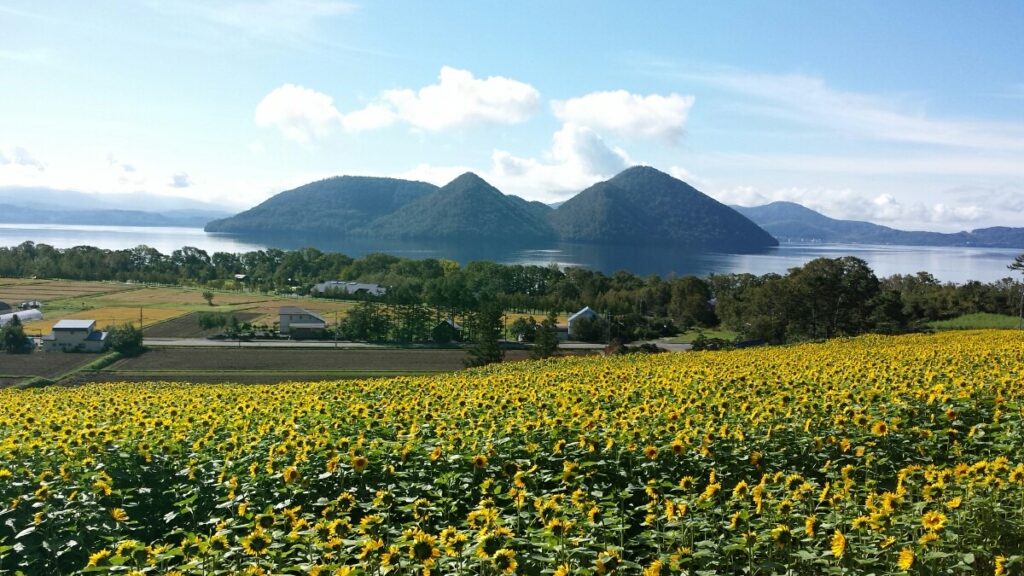
Toyako Town is located in the southwestern part of Hokkaido, surrounded by lakes, Mount Usu (Usuzan), and Uchiura Bay (Eruption Bay). The town is known for its relatively mild climate, even in the cold climate of Hokkaido, and has a thriving agriculture and livestock industry that produces root vegetables, leafy greens, fruits, and other crops. Lake Toya, with its beautiful blue surface, is one of the town’s most famous scenic spots. Lake Toya was created by a massive eruption about 110,000 years ago and is known as the third largest caldera lake in Japan.
In addition to its magnificent nature, the town is conveniently located only 2 hours from Sapporo by car and 1 hour and 30 minutes from New Chitose Airport, attracting as many as 2.5 million visitors throughout the year.
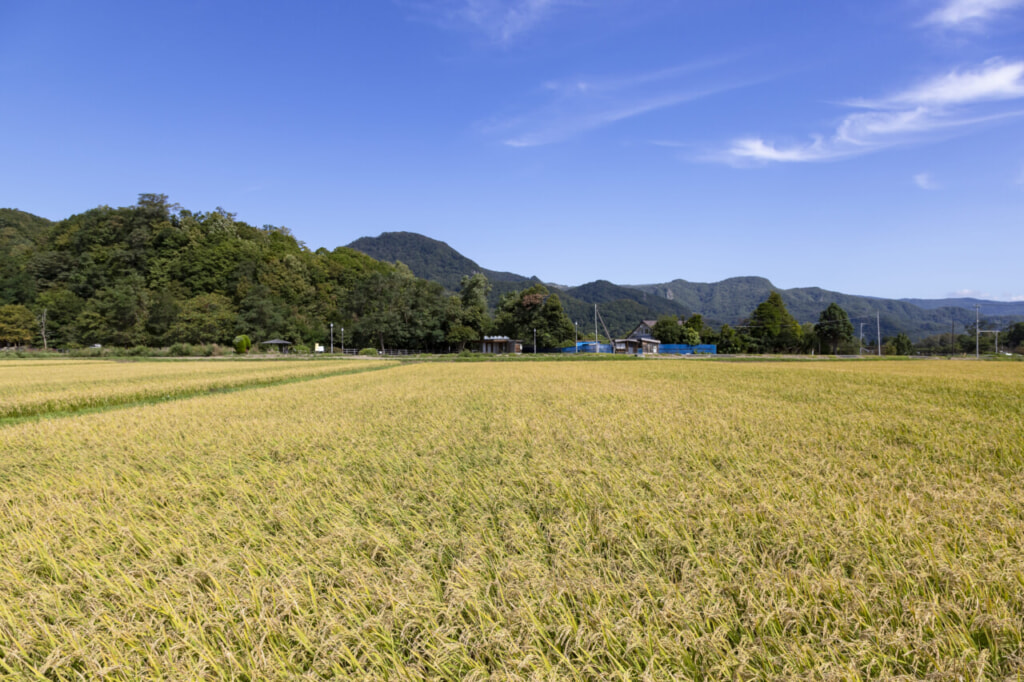
Toyako Town produces a wide variety of agricultural products, but only a limited amount of rice is grown in the town. It is called “Takarada-mai” rice, produced in the Takarada area, which was pioneered by settlers from Saida Village in Mino County, Kagawa Prefecture .
The area planted with Takarada rice, including Takarada and the surrounding Kawahigashi area, is small at about 42 hectares (about nine times the size of the Tokyo Dome), and the yield is limited. Because of its scarcity, it is sometimes referred to as “maboroshi no omai.
In Asahikawa, one farmer grows 50 hectares of rice. In Asahikawa, one farmer produces 50 hectares of rice, which is one of the lowest yields in Hokkaido. However, we are confident in the quality of our rice,” says Tetsuzo Sasaki of Miyauchi Farm, a 130-year-old rice farmer in the Zaida area.
This is a fan-shaped area where fine sediment has accumulated as a result of the constant flow of water from the mountains to the northeast. It drains well and gets good sunlight. In addition, nature adjusts the necessary nutrients just right, so we have all the conditions necessary to produce delicious rice.
The water that flows from the mountains slowly flows to the gently sloping plains, and when the large-grained sediment stays in place, it forms a well-drained fan-shaped area. The fertile alluvial soil lies 30 meters below the ground in Zaida, which was originally a riverbed. This soil is the source of the rice’s delicious taste, and the mild climate surrounded by mountains and the clear Sobetsu River…the blessings of nature are poured into the rice in a calculated manner.
The rice won the top prize at the “Rice-1 Grand Prix” in Japan.
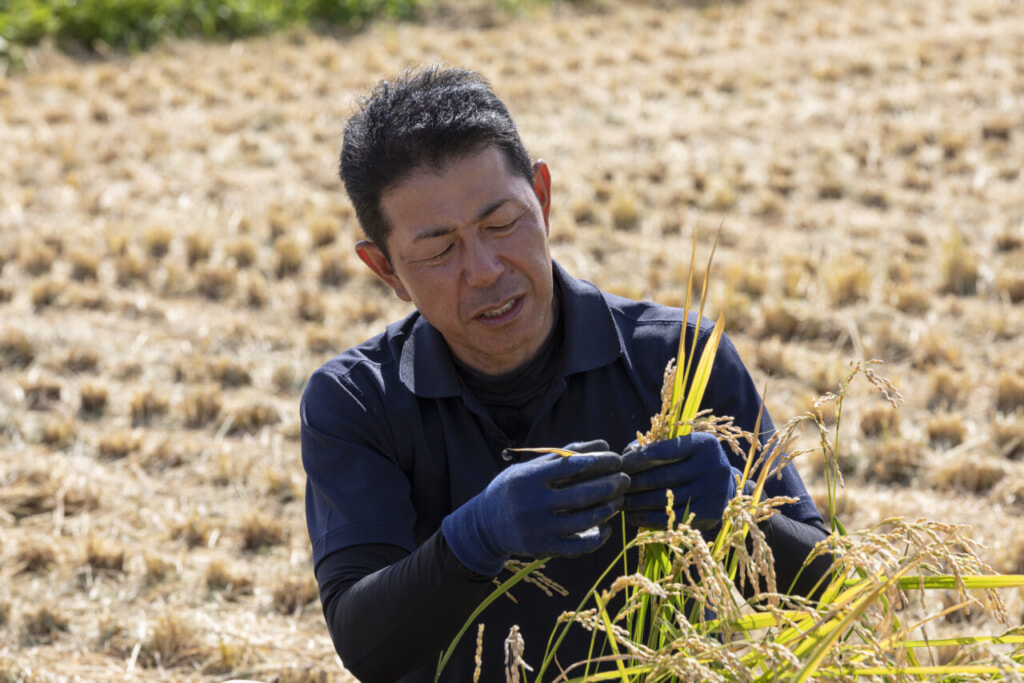
The Takarada area meets the three requirements for rice cultivation: soil, water, and climate. However, according to Mr. Sasaki, one of the advantages of the area is its “good drainage,” which makes water management difficult. The sandy soil and the fact that the rocks are underneath make water drainage easier,” he said. If you put water in, it will all run out in two days. So you have to keep running water all the time.
If the water is always cold, the rice will not grow. Instead of drawing water directly from the river like most rice paddies, we create a time lag by passing water from one paddy field to another, warming it up, and then passing it back down to the fields below, which is a method unique to Zaida,” said Sasaki. From a distance, the rice fields look like terraced rice paddies.
In addition, “good drainage,” which is highly beneficial to the taste of the rice, also contributes to the difficulty of creating the rice paddies themselves.
The water level in each rice paddy is completely different, depending on the location. Some rice fields hold water well, while others lose a lot of water. We have to change the amount of fertilizer according to the amount of water in order to grow good rice.
The soil created by nature does not always follow the theory. Mr. Sasaki says that after adjusting the fertilizer mixture and pulling out the weeds that grow day by day, he is finally able to produce rice paddies that he is satisfied with. It is often said that the weather is 20% of your skill and 80% of your work,” he says. There is no way to compete with the weather.
In order to produce rare and valuable rice, Mr. Sasaki works hard every day to find the best solution for the topography, soil, and climate of his rice paddies. The taste of Mr. Sasaki’s rice, which is made with such passion, has been well received, winning the Grand Prix at the 8th “Rice-1 Grand Prix” in 2018 (Heisei 30), as well as the Excellent Gold Award at the 13th “You Choose the Best Rice in Japan” in 2019 (Heisei 31), sponsored by Shonai-cho, Yamagata Prefecture, known as one of the best rice producers in the country. The “Zaida Rice” has achieved increased visibility by winning the Gold Award for Excellence in the “Your Choice Japan’s Most Delicious Rice Contest.
Hokkaido rice was changed! Yumepirika, Nanatsuboshi, and Hukkunko
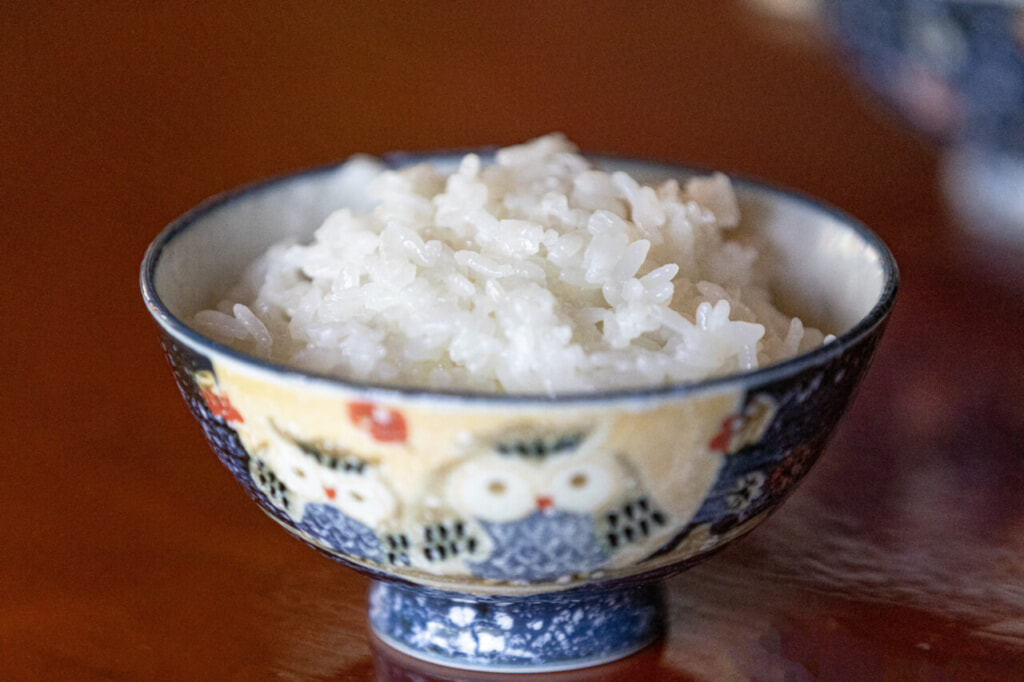
Mr. Sasaki emphasizes the significance of the nationwide recognition of Hokkaido rice as “delicious. This is because Hokkaido rice has long enjoyed the dishonorable status of “yakkaido-rice,” he says. It has been said that the rice produced in Hokkaido is not tasty,” he says. There were not enough varieties of rice to go around.
Hokkaido, known as a treasure trove of foodstuffs, is one of the largest producers of marine, agricultural, and livestock products, and has a vast, wide-open land. The weather conditions vary from region to region, not to mention the severe cold. It took a long time to produce good quality rice of consistent and uniform quality.
I think it is fair to say that the history of rice in Hokkaido lies in the improvement of rice varieties. The people at the Agricultural Experiment Station took the time to take Hokkaido’s climate into account and find rice that could withstand low water temperatures in the spring and grow even at low temperatures in the summer. They have worked hard over time to create a rice variety that is also very tasty. I feel that this has made it possible for us to produce delicious rice in Hokkaido.
As Mr. Sasaki says, the Kamikawa Agricultural Experiment Station in Hokkaido patiently continued to analyze components such as starchy amylose and protein, which are related to the balance between stickiness and hardness of rice, and developed “Kirara 397,” which was a turning point in changing the image of rice in Hokkaido. I think things changed after ‘Kirara 397’ came out. And then, “Nanatsuboshi,” followed by “Fukkunko,” a variety from the southern part of Hokkaido that is not widely distributed, and “Yumepirika,” which became famous through commercials, probably changed the image of rice in Hokkaido. This may not be a good sign for the earth, but I feel that it also has something to do with the fact that global warming has made it easier to grow rice in Hokkaido.
In the Zaita area, many farmers grow Yumepirika, Nanatsuboshi, and Hukkunko varieties in equal proportions. Mr. Sasaki finds Yumepirika to be the most delicious.
I am confident that all of the Zaida rice varieties are delicious, but it is the “Yumepirika” variety that is outstandingly chewy and has low amylose, a starch molecule. It is light in color, beautiful to look at, and tastes good even when cold. It is also popular when made into onigiri (rice balls).
Hukkurinko, a variety grown only in the Hakodate area of southern Hokkaido, is also sweet, sticky, and has large grains, and Mr. Sasaki says he would like to try this variety in the future to increase yields.
My father, who is now 86 years old, says that rice cultivation is a one-year job; he has been doing it for 80 years, but there has never been a year when the same method works,” says Sasaki.
Every day is a learning experience, and even though it has been 10 years, no two years are ever the same. There are many times when I harvest the rice thinking it will be good this year, but it turns out to be different. That’s what makes it interesting, and I think that’s what you learn firsthand by facing the rice paddies every day.”
It’s not just rice. Corn “Megumi Gold” is highly praised by famous restaurants.
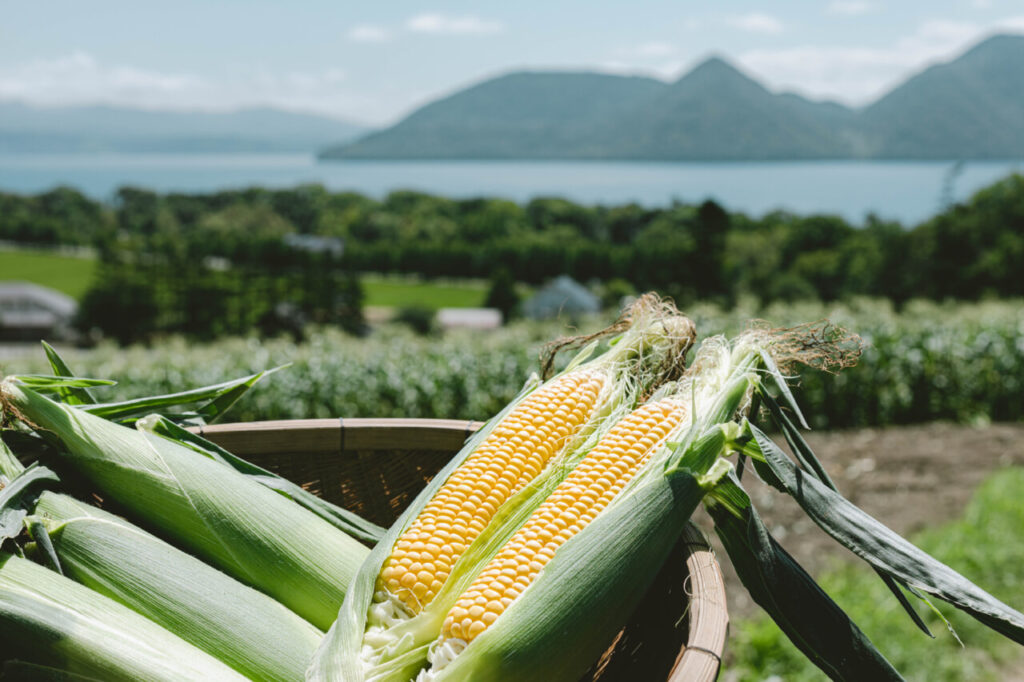
In addition to rice, Miyauchi Farm also produces corn. The variety is “Megumi Gold,” which is the main variety grown around Lake Toya. The bright yellow kernel skin does not wrinkle easily when boiled and looks beautiful.
Miyauchi Farm’s corn has a reputation for being of particularly high quality, and is served at various famous restaurants in the Kansai region, including The Windsor Hotel Toya, known as the venue for the 2008 G8 Toyako Summit, Kyoto Arashiyama Kitcho, a first-class ryotei restaurant, and Michelin-starred restaurants.
Corn’s sugar content increases due to the difference in temperature. In summer, the temperature rises to about 30°C during the day, but it drops dramatically to 15°C at night. That’s how the sugar content increases. I feel that this may be true for rice as well. I think that once the rice is cooled after harvest, the sugar content rises and the taste is enhanced, making the rice tastier.
More than 130 years of pioneering history from Kagawa to Lake Toya
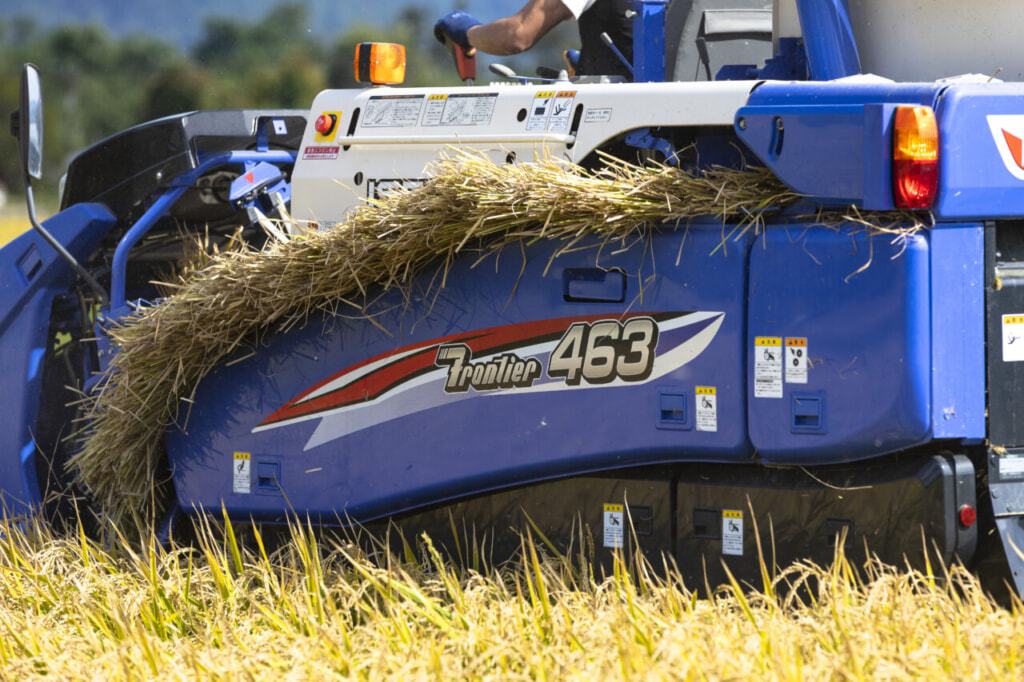
Mr. Sasaki is the fifth generation of Miyauchi Farm, which has a long history. Mr. Sasaki’s ancestors, the first generation, emigrated from the former Marugame domain in Kagawa Prefecture, Shikoku, in 1887, and began cultivating land in the form of the Toya Settlement, he says. This year marks 137 years since we first settled here. We are now the only settlers who have been involved in farming since that time,” he says.
It has been 10 years since Mr. Sasaki took over as the fifth generation farmer, and he used to work as an office worker. The life as a salaried worker was comfortable, and he continues in a calm tone of voice, “I thought I would be able to stay here until retirement.
But as I got older, I started to see what was coming next. I wanted to be more excited. Farming is an unknown world, and I felt something exciting in my heart. In fact, this is my wife’s family, and we were also looking for an heir. I felt that it would be a shame to let it go out of business after this generation, so I thought I would give it another try.
However, his wife, who grew up on a farm, told him not to do it because it was impossible,” he recalls. She knew from watching her family since she was a child that farming was tough and difficult. Now, however, she is grateful for her husband’s choice.
I was really happy when customers who bought our rice said it tasted good,” she says.
Mr. Sasaki agrees. I am also really encouraged by what our customers say.
Passing on the appeal of the Zaida brand to the next generation

Mr. Sasaki, who works hard to grow delicious rice while facing the land, climate, and nature of Zaida, is concerned that the Japanese people have stopped eating rice.
If imports from overseas are stopped, I feel that Japan will run out of food. Think about it, rice can be grown in the same place the next year. Unlike wheat, you don’t have to change the location. I think this is because it is a crop suited to Japan. I want to produce more and more delicious rice so that we don’t have to depend on imported foods. I want everyone to eat more rice. We want to preserve Zaida rice for future generations.
The 14 farmers have started to work together to promote the wonderfulness of Zaida rice both in Hokkaido and abroad through the establishment of the “Zaida Rice Brand Council.
For example, we make stickers and pamphlets and actively participate in events. We hope that young people who see or hear about these efforts will become interested in solder rice. And if possible, we would be more than happy if they would want to become rice farmers.
In order to increase the number of new farmers, there are many issues that need to be resolved, such as initial costs. Mr. Sasaki speaks strongly about his desire to share his wisdom on issues related to farming and do his utmost to ensure that the landscape and solida landscapes that nurture the rice in Zaida will be preserved for a long time to come. He will continue to focus his efforts on passing on the “treasure” of Zaida to the future of Japan, which was inherited from his ancestors who came all the way from Kagawa.




